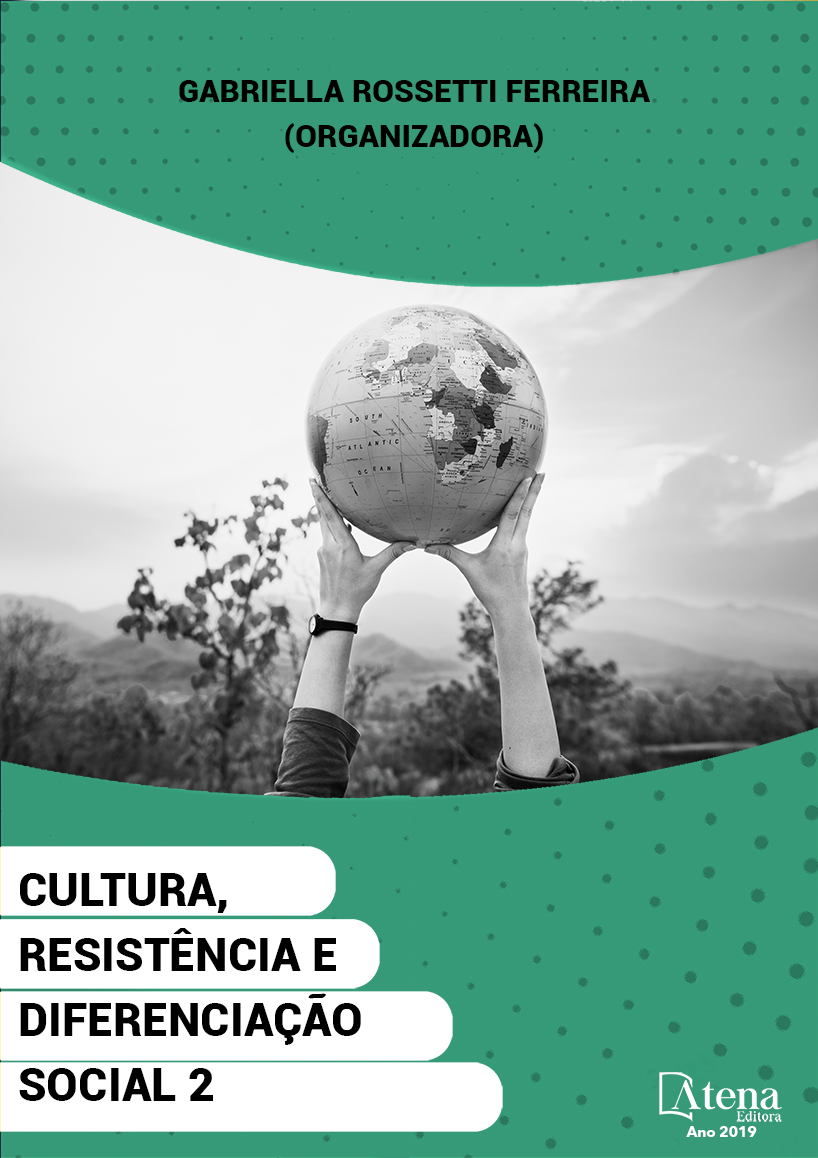
COMUNIDADES TRADICIONAIS E A CONSERVAÇÃO DA FLORESTA: UM OLHAR SOBRE A COMUNIDADE VILA FRANCA, RESEX TAPAJÓS-ARAPIUNS, PARÁ, BRASIL
Diante da crescente crise ambiental
gerada pelo uso indiscriminado dos recursos
naturais, é imprescindível rever os métodos
de uso das florestas. Nesse aspecto, as
comunidades tradicionais podem ser bons
modelos para estudo sobre sustentabilidade e
manuntenção da floresta. Esse estudo relata
o uso de recursos florestais não madereiros
pela comunidade tradicional Vila Franca,
localizada na Reserva Extrativista (RESEX)
Tapajós-Arapiuns, Oeste do estado do Pará,
para produção de artesanato e manutenção
da cultura nativa. Observações in loco
foram realizadas e entrevistas abertas foram
obtidas quanto à coleta e uso dos resíduos
vegetais. As sementes são os recursos mais
acessados da floresta devido a sua resistência
e abundância. As coletas são realizadas em
trilhas pré-existentes e acompanham o ciclo de
reprodução das plantas. O banco de sementes é
respeitado e a manutenção de plântulas jovens
é realizada para garantir o ciclo de reprodução
das espécies de interesse. As sementes mais
requeridas pertencem às famílias Poaceae
como a espécie Coix lacryma-jobi L. também
conhecidas como lágrimas-de-Nossa-Senhora
e Arecaceae (palmeiras) como Euterpe sp.
(açaí), Astrocaryum ssp. (tucumã) e Attalea
ssp. (inajá), por serem rígidas e resistentes
ao armazenamento. Cada peça pode conter
até 100 sementes e algumas acompanham
complementos como o Muiraquitã [muyrakytãs
(do Tupi, rã)], representação da natureza. Estas
são processadas, recebem acabamento artístico
(biojoias) e posteriormente comercializadas.
Comunidades como Vila Franca, vivem da
floresta e são importantes agentes no manejo
sustentável, principalmente na Amazônia,
onde além da manutenção de suas culturas e
crenças, contribuem para a conservação da
biodiversidade.
COMUNIDADES TRADICIONAIS E A CONSERVAÇÃO DA FLORESTA: UM OLHAR SOBRE A COMUNIDADE VILA FRANCA, RESEX TAPAJÓS-ARAPIUNS, PARÁ, BRASIL
-
DOI: 10.22533/at.ed.2421909088
-
Palavras-chave: artesanato; biodiversidade; recursos naturais; saber popular.
-
Keywords: handicrafts; biodiversity; natural resources; popular knowledge.
-
Abstract:
Before the growing environmental crisis generated by the indiscriminate
use of natural resources, it is indispensable to review the methods of forest use. In
this aspect, traditional communities can be good patterns for the study of sustainability
and forest maintenance. This study reports the use of non-timber forest resources by
the traditional community Vila Franca, located in the Reserva Extrativista (RESEX)
Tapajós-Arapiuns, in the western of Pará state, for the production of handicrafts and
maintenance of native culture. On-site observations were made and open interviews
were obtained regarding the collection and use of plant residues. Seeds are the most
accessed resources of the forest because of their resistance and abundance. The
collections are carried out on pre-existing tracks and follow the reproduction cycle
of the plants. The seed bank is respected and the maintenance of young seedlings
is performed to ensure the reproduction cycle of the species of interest. The most
requested seeds belong to the families Poaceae as the species Coix lacryma-jobi L.
also known as lágrimas-de-Nossa-Senhora and Arecaceae (palm trees) as Euterpe sp.
(açaí), Astrocaryum ssp. (tucumã) and Attalea ssp. (inajá), because they are rigid and
resistant to storage. Each piece can contain up to 100 seeds and some accompany
complements such as Muiraquitã [muyrakytãs (Tupi, frog)], representing nature. These
are processed, receive artistic finishing (bio jewels) and later they’re commercialized.
Communities such as Vila Franca, depend on the forest and are important agents in
sustainable management, especially in the Amazon, where, in addition to maintaining
their cultures and beliefs, they contribute to the conservation of biodiversity.
-
Número de páginas: 15
- Marcos Diones Ferreira Santana
- Emeli Susane Costa Gomes
- Luciana Edilena Santos Guimarães
- Ana Daiane Lopes Costa
- Jarlei Dominique Souza da Silva


